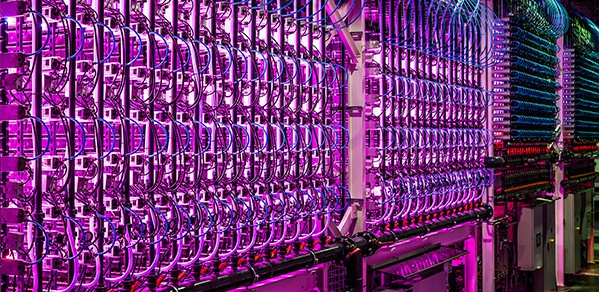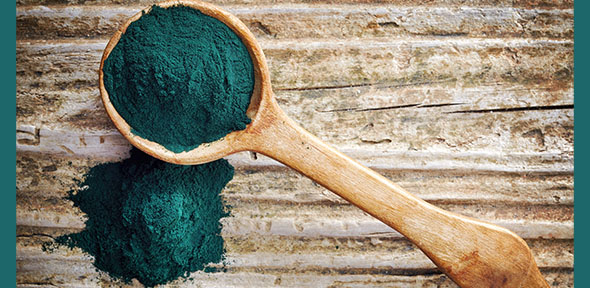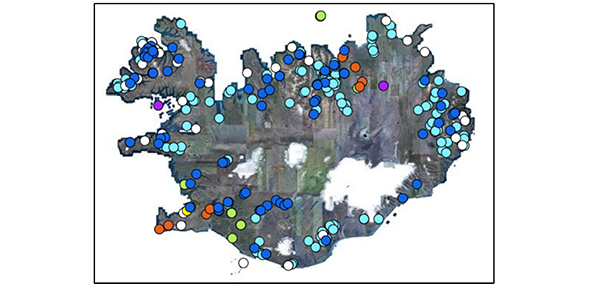
Iceland could help address Northern Europe’s food security issues with the scaling-up of its industrial production of Spirulina – an alternative protein source that is nutritious, sustainable and risk resilient. Under the most ambitious of estimations, Iceland could be protein self-sufficient and capable of feeding more than six million Europeans every year, a new feasibility study suggests.
By relocating electricity currently consumed by heavy industry, Iceland could transition to a position as a major and sustainable alternative protein exporter.
Dr Catherine Richards
The environmental implications of humans continuing to hinge their diets on animal source foods for protein (including eggs, milk, beef, pork, poultry and fish), together with Europe’s dependency on protein-rich crop imports to meet food demand, has pushed the topic of sustainable protein self-sufficiency higher up the political agenda.
Now ‘future foods’ such as Spirulina – a blue-green algae with multiple health benefits – have been proposed as substitutions for conventional meat, with the potential to reduce environmental impacts e.g. greenhouse gas (GHG) emissions and freshwater withdrawals, by more than 90%.
It has been reported that Spirulina contains a higher content of protein (up to 70% per 100g) than meat from beef cattle (up to 30% per 100g lean meat), with the average European consuming nearly 80kg of beef meat per year. While Spirulina is currently less affordable than beef, it is anticipated that once it similarly becomes produced at mass-scale, the price would become more affordable.
In Iceland, Spirulina is already produced successfully in a novel, industrial-scale, biomass cultivation system powered by renewable energy. Currently in operation is the Hellisheidi Production Unit, operated by Vaxa Iceland, and situated in the Hellisheiði geothermal power plant. The production process is carbon neutral.
For the purpose of the feasibility study, Dr Asaf Tzachor and Dr Catherine Richards, from the Centre for the Study of Existential Risk (CSER) at the University of Cambridge, in collaboration with researchers from Denmark and Iceland, explored Iceland’s role in supporting Northern European countries to achieve protein self-sufficiency. Data from the Hellisheidi Production Unit is used as a benchmark for the researchers’ protein self-sufficiency feasibility model. The model is used to assess scenarios of further scale-up of Iceland’s Spirulina production capacity and export of the edible biomass. Their findings are reported in the journal Foods.

Spirulina in pressed powder form. Credit: Mara Zemgaliete – stock.adobe.com
Using six Spirulina production scale-up scenarios, the researchers assess possible production expansion based on the use of currently installed and potentially installed renewable energy capacity1. The model consists of two main components: protein supply (including real-world Spirulina production data) and protein demand (accounting for adult daily protein intake requirements as well as the suitability of Spirulina biomass to satisfy these requirements). According to the researchers, to ensure sufficient intake of all essential amino acids, men would need to consume 39.34kg of Spirulina biomass (in dry weight), and women would need to consume 33.72kg of Spirulina biomass, each year.
Under the first production scale-up scenario, assuming a conservative scale-up, Iceland could be protein self-sufficient with 20,925 tonnes of Spirulina produced per year using 15% of currently installed electricity generation capacity. This is enough to meet the protein and dietary requirements of 572,867 individuals.
In the sixth scenario, billed the “ultimate scale-up”, Iceland could be self-sufficient and – in a greater allocation of energy capacity used by heavy industry – the country could additionally meet the needs of Lithuania and Latvia, or Lithuania and Estonia, plus Jersey, Isle of Man, Guernsey, and the Faroe Islands. Under this most ambitious scenario using planned energy projects, Iceland could support itself plus Denmark (population of 6,104,474 in 2030), or Finland, or Norway, or Ireland with up to 242,366 tonnes of Spirulina biomass per year, satisfying 6,635,052 people.

Map of power plants in Iceland. Orange dots = geothermal power plants. Dark blue dots = hydroelectric power plants. Bright green dots = wind turbine power plants. Yellow dots = solar power plants. Purple dots = petroleum-based power plants. Pale blue dots = home power plants. White dots = backup power plants. Map data obtained from Government of Iceland.
“Europe’s reliance on third parties for the importation of protein-rich crop imports to meet domestic food demand, exposes such countries to protein supply change disruptions,” said Dr Asaf Tzachor. “This renders European food security vulnerable, a situation which is only further exacerbated by the impacts of climate change on our global agricultural systems. This is why sustainable protein self-reliance is such a hot topic at the moment, with Spirulina identified as one such ‘future food’ recognised as a superb provider of complete protein with nutritional benefits including antioxidant and anti-inflammatory effects.”
Although not the main focus of their feasibility study, the researchers also note the ancillary environmental benefits of Spirulina production, namely GHG emissions reduction. It is anticipated that if global GHG emissions reduction took precedence over Northern Europe’s protein self-sufficiency, and instead Spirulina biomass was adopted in Western diets as a beef meat protein alternative (in the form of pills or pressed powder), the average consumer may maintain a balanced diet while decreasing GHG emissions associated with beef cattle agriculture and meat processing.
“On a protein-per-protein basis, for each kilogram of Spirulina (dry weight) consumed instead of meat from beef cattle, 315kg CO2 equivalent (CO2-eq) could be reduced,” said Dr Catherine Richards, who completed her PhD at the Department of Engineering. “As a climate change mitigation option, and under the most ambitious scenario, this intervention alone may yield annual savings of 75.1 million tonnes CO2-eq or 7.3% of quarterly European greenhouse gas emissions.”
While the scaling-up scenarios considered in the feasibility study assume idealised production conditions, the researchers do acknowledge that the success of these are dependent on the allocation of adequate electricity. Additionally, there are financial considerations to factor in with regards to the ramping-up of Iceland’s Spirulina production, as well as wider awareness-raising work needed to communicate to the public the benefits of Spirulina consumption.
“Ultimately, there is a real opportunity here for Iceland to advance its biotechnology industry,” said Dr Richards. “By relocating electricity currently consumed by heavy industry, Iceland could transition to a position as a major and sustainable alternative protein exporter.”
Reference:
Asaf Tzachor, Catherine E. Richards, at al. ‘The potential role of Iceland in Northern Europe’s protein self-sufficiency: feasibility study of large-scale production of Spirulina in a novel energy-food system'. Foods (2022). DOI: 10.3390/foods12010038
- - -
1 More than 99% of total electricity in Iceland is generated from low-carbon, renewable and non-intermittent hydropower and geothermal resources [view source].

